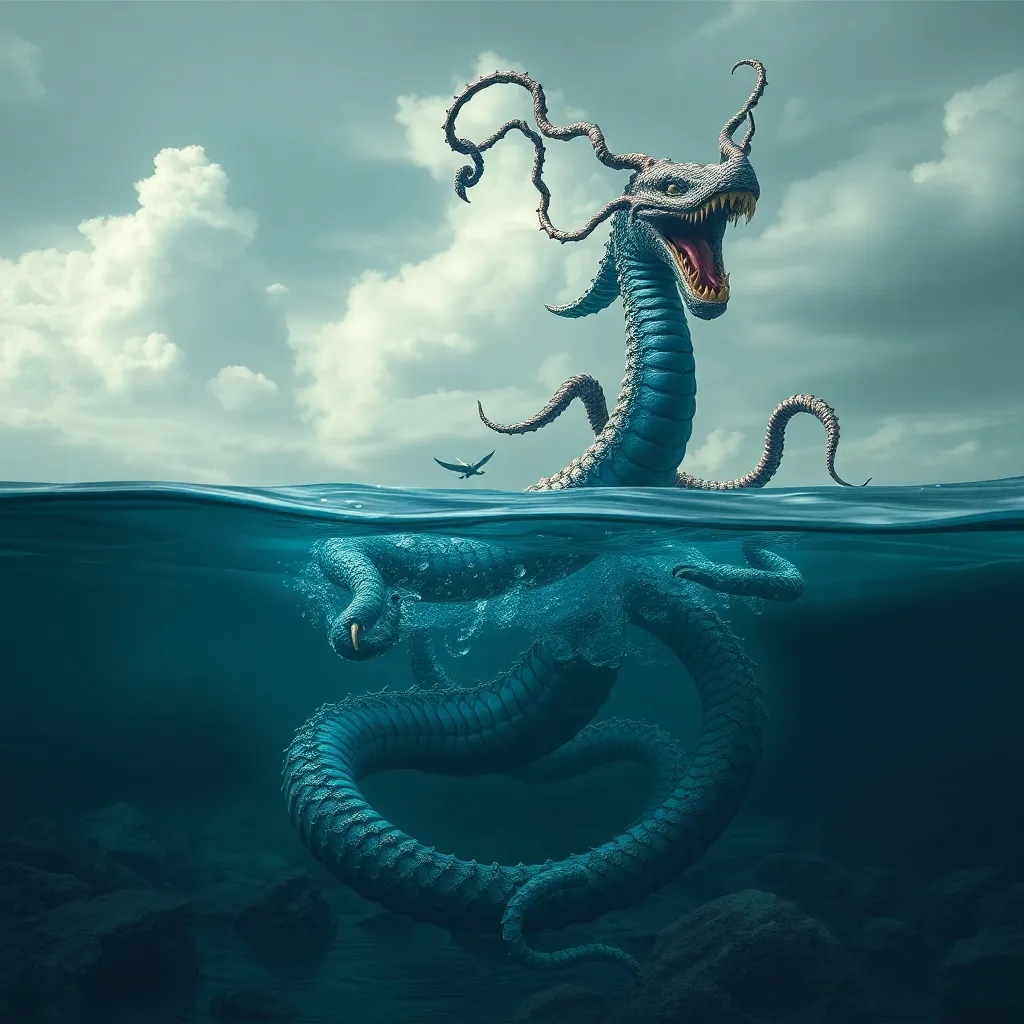The Curse of the Ring: Fafnir and the Saga of the Volsungs
I. Introduction
The Saga of the Volsungs, a cornerstone of Norse mythology, tells the tale of heroes, gods, and the tragic consequences of human ambition. At its heart lies the story of Fafnir, a once-noble dwarf who becomes a dragon, embodying the destructive power of greed. This saga illustrates the theme of how insatiable desire for wealth and power can lead to dire consequences, not just for individuals but for entire bloodlines.
II. The Origins of the Curse
The origins of the curse begin with the Rhine gold, a treasure of immense value that brings misfortune to all who possess it. This gold is enchanted, carrying with it a curse that transforms lives and motives. Fafnir, initially a dwarf and a brother to Regin, succumbs to this curse, allowing greed to corrupt his soul.
Fafnir’s transformation from brother to dragon is symbolic of how power can corrupt. Once a protector of treasure, he becomes a creature of fear, driven by an insatiable thirst for gold. The curse of the Rhine gold manifests through Fafnir’s greed, illustrating how the lust for wealth can lead to the loss of humanity.
Key Points:
- The Rhine gold is the source of the curse.
- Fafnir’s transformation signifies the corrupting influence of greed.
- Power and greed are central to the curse’s narrative.
III. The Tale of Sigurd
Sigurd, a heroic figure in Norse mythology, embarks on a quest to slay Fafnir, seeking to rid the world of the dragon’s terror and claim the treasure for himself. His journey is fraught with danger, but it is the sword Gram that becomes a pivotal element in this tale. Forged by the dwarven brothers, Gram is a symbol of Sigurd’s destiny and strength.
However, the saga foreshadows doom. The act of slaying Fafnir, while heroic, is also laden with consequences that Sigurd cannot foresee. His victory over the dragon is not merely an act of bravery; it sets in motion a series of events that will lead to his own demise.
Significant Elements:
- Sigurd’s quest represents the archetypal hero’s journey.
- The sword Gram symbolizes destiny and power.
- Foreshadowing of fate hints at the tragic outcomes of his actions.
IV. The Slaying of Fafnir
The climactic battle between Sigurd and Fafnir is a moment of both triumph and tragedy. As Sigurd confronts the dragon, he embodies the hero archetype, showcasing valor and skill. The battle is fierce, and Sigurd ultimately prevails, driving his sword into Fafnir’s heart. This moment is laden with symbolism—the dragon represents not just the physical embodiment of greed but also the burdens that come with victory.
Upon slaying Fafnir, Sigurd claims the dragon’s treasures, including the cursed ring Andvaranaut. This victory, however, is bittersweet, as it is the beginning of a chain reaction that will lead to further tragedy and loss.
Key Themes:
- The dragon symbolizes greed and the danger of excess.
- Victory over Fafnir comes with unforeseen consequences.
- Triumph is often accompanied by tragedy in the saga.
V. The Aftermath of Victory
The aftermath of Fafnir’s slaying reveals the true nature of the curse. Sigurd discovers the cursed ring Andvaranaut, a treasure that brings misfortune to its bearer. Despite his victory, Sigurd finds himself ensnared in the web of greed that the ring represents. The events that follow are tragic—betrayal, loss, and a cascade of violence ensue as the curse spreads.
Sigurd’s relationships suffer as the curse affects not only him but also those he loves. His wife, Gudrun, and his comrades become entangled in the fallout, illustrating the far-reaching impact of greed and ambition.
Consequences:
- The cursed ring leads to further tragedy and betrayal.
- Sigurd’s victory isolates him from his loved ones.
- The curse manifests in a cycle of violence and loss.
VI. Themes of Greed and Betrayal
The Saga of the Volsungs is rich with moral lessons about greed and betrayal. Characters are interlinked through their desires, and their fates are often sealed by their ambitions. The saga illustrates the destructive power of greed, showing how it can lead to ruin not only for individuals but also for families and entire lineages.
The interconnectedness of the characters’ fates emphasizes the cyclical nature of greed, revealing a pattern where one act of betrayal leads to another. As characters strive for power and wealth, they often end up destroying each other, leading to inevitable doom.
Core Themes:
- Greed serves as a catalyst for destruction.
- Characters are interconnected, each affecting the other’s fate.
- The saga illustrates the cycle of ambition leading to tragedy.
VII. Fafnir in Modern Interpretations
Fafnir’s story has transcended time, inspiring numerous adaptations in literature, film, and popular culture. From Richard Wagner’s operatic interpretations to modern fantasy literature, the tale of Fafnir continues to resonate with audiences. The symbolism of the dragon has evolved, representing not just greed but also the monstrous aspects of human nature.
The enduring relevance of Fafnir’s story lies in its exploration of themes that remain pertinent today. Greed, ambition, and the consequences of desire are universal concepts that continue to affect societies worldwide, making the tale of Fafnir a timeless cautionary narrative.
Modern Adaptations:
- Literary works that draw from Norse mythology.
- Film adaptations that reinterpret the saga.
- Symbolism of dragons in contemporary storytelling.
VIII. Conclusion
Reflecting on the legacy of the Curse of the Ring, it becomes clear that the Saga of the Volsungs offers profound insights into human nature. The tale of Fafnir serves as a cautionary reminder of the dangers that accompany unchecked ambition and greed. The saga’s lasting impact on Norse mythology underscores the timeless relevance of its themes.
As we examine the story of Fafnir and Sigurd, we are left with critical reflections on the nature of power, the consequences of desire, and the intricate web of fate that binds all characters in the saga. Ultimately, it serves as a poignant reminder of the perils that come with striving for more than one can responsibly handle, echoing the age-old adage: “All that glitters is not gold.”


